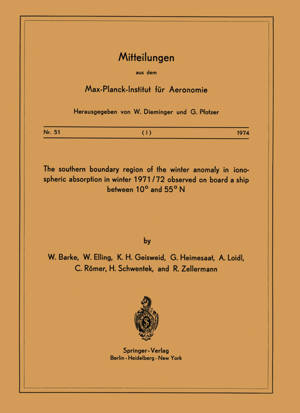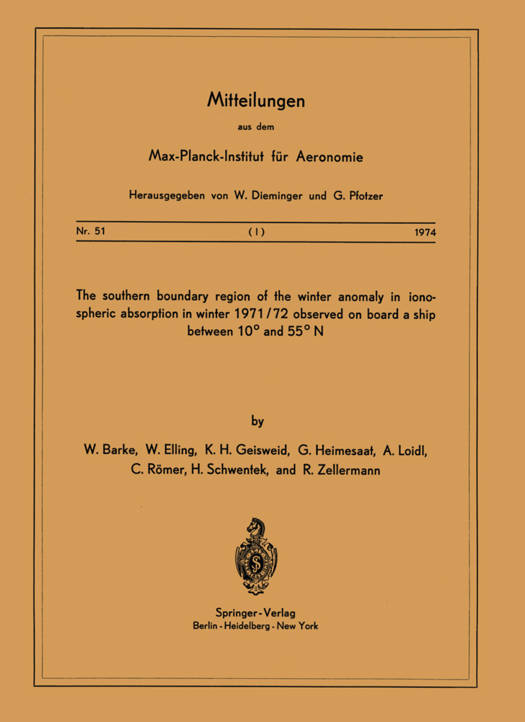
- Afhalen na 1 uur in een winkel met voorraad
- Gratis thuislevering in België vanaf € 30
- Ruim aanbod met 7 miljoen producten
- Afhalen na 1 uur in een winkel met voorraad
- Gratis thuislevering in België vanaf € 30
- Ruim aanbod met 7 miljoen producten
Zoeken
The Southern Boundary Region of the Winter Anomaly in Ionospheric Absorption in Winter 1971/72 Observed on Board the Cargo Vessel "Hanau" of Hapag-Lloyd Moving Between 10° and 55° N
W Barke, W Elling, K H Geisweid, G Heimesaat, A Loidl, C Römer, H Schwentek, R Zellermann
€ 105,45
+ 210 punten
Omschrijving
In the period 28 November 1971 to 12 February 1972. during three passages of the North Atlantic. the diurnal variation of ionospheric absorption L was measured by method Al at 1. 7 and 5. 0 MHz as a function of geographic and geomagnetic parameters. The measurements were carried out. applying a new equipment especially designed for mobile expeditions. on board a cargo vessel (mv "Hanau" of Hapag- 0 0 0 0 -Lloyd) moving between Hamburg (53 N; 10 E) and La Guaira (11 N; 67 W). Simultaneously. in the framework of the European Cooperation on Winter Anomaly studies. measurements of absorption were made at various other locations and the data used as a basis for comparison [circuits Norddeich-Lindau 0 0 0 0 (A3; 2. 61 MHz; 52. 6 N; 8. 7 E) and Aranjuez-Balerma (A3; 2. 83 MHz; 38. 6 N; 5. 2 W). station Lan- 0 0 caster (AI; 2. 14 MHz; 53 52' N; 2 45' W) 1 . Aboard. the diurnal variation of absorption showed large modifications from day to day. The behaviour of L (cos X = 0. 2) waS somewhat different at each passage 0 0 but showed a common trend: The winter anomaly vanished in a transit zone between 34 and 44 N cen- 0 tered at about 39 N; the same was true for the behaviour of L (cos X = 1).
Specificaties
Betrokkenen
- Auteur(s):
- Uitgeverij:
Inhoud
- Aantal bladzijden:
- 36
- Taal:
- Engels
- Reeks:
- Reeksnummer:
- nr. 51
Eigenschappen
- Productcode (EAN):
- 9783540066606
- Verschijningsdatum:
- 15/03/1974
- Uitvoering:
- Paperback
- Formaat:
- Trade paperback (VS)
- Afmetingen:
- 210 mm x 279 mm
- Gewicht:
- 108 g

Alleen bij Standaard Boekhandel
+ 210 punten op je klantenkaart van Standaard Boekhandel
Beoordelingen
We publiceren alleen reviews die voldoen aan de voorwaarden voor reviews. Bekijk onze voorwaarden voor reviews.











